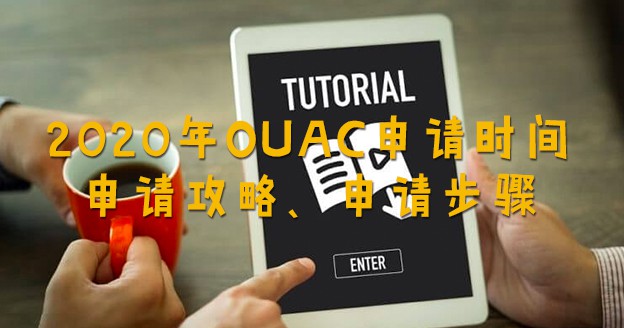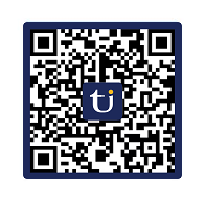Canada's outstanding education quality and comfortable living environment have gradually made studying abroad a favourable choice among Chinese parents. According to the analysis of data on students studying abroad collected by UtoCanada, Ontario and British Columbia (BC) have become the top choice for most parents to send their children to study abroad. So, let’s take these two provinces as an example. Here is a detailed explanation of the Canadian high school admissions test and the high school examination system in these two provinces.
Canadian High School Admissions Test
Canadian high school admissions tests are not as difficult as many parents may think. The admissions test is more like a“placement test".The school usesthe results of the admissions testto determine the ESL level of the child outside the classroom (levels are divided into AO, BO, CO, DO, EO).
The content of the admission tests is quite different from Chinese examinations. The Canadian high school admissions test is generally only for English and math. Then, the student is given a suggested placement based on his/her results of the test. If you fully intend to start at 11th grade, you can. Decisions on your placement are not that strict. Even if you are in 10th grade and you are really good at math, you can choose to take 11th grade math, or even grade 12 math! Similarly, if you are in grade 11, you can also start from grade 10 English. However, some students approaching their final year in high school may find that they do not have enough time left to complete all the necessary 12th grade courses, so it is possible to stay behind for another semester or two. The main goal here is to graduate fewer years. So, if you are an international student, you will want to finish your studies early because of the high tuition fees. If you have already immigrated here, high school is free. So, you may wish to take more university/college-related courses, participate in social activities, and get a part-time job, so you can get more scholarships and be better prepared the University.
In addition to the entrance exam, there are of course other exams. Next, we will take a closer look at each type of exam.
Ontario High School Examinations
For students studying in Ontario high schools, the most important test is the Ontario Secondary School Literacy Test (OSSLT).啦。OSSLT是Ontario Secondary School Literacy TestIt is issued by the Education Quality and Accountability Office (EQAO) to test whether students' English literacy skills are up to standard with the Ontario curriculum.
The OSSLT takes place at the end of March or early April each year, and the students get their test results in June of the same year. The test is marked on a pass/fail basis, and only after passing the OSSLT exam are they eligible to obtain the Ontario Secondary School Diploma. As for students who fail the exam, they will only need to attend in Ontario Secondary School Literacy Course (OLC Course) at their school from mid to late June, and pass the exam of the course. After that, they can also obtain the Ontario Secondary School Diploma and apply for university/college.
OSSLT in Ontario: Exam Format and Content
The OSSLT is a standardized exam used to assess students’ reading and writing skills, and its difficulty is equivalent to that of Ontario's high school grade 10 English. During the exam, candidates will receive two booklets, the Question Booklet and the Answer Booklist. All answers must be written on the answer booklet.
There are three articles in the reading test section, including multiple-choice and short-answer questions. The purpose is to measure students understanding of ideas and information that are directly or indirectly stated in the text. The reading test consists of common reading materials, including academic materials, newspaper articles, graphic materials, literary materials, etc. The writing section contains multiple-choice questions and writing tasks. The writing test measures the student's ability to develop a main idea, provide supporting details, organize and link ideas and information, use a tone for the particular type of writing and use correct spelling and grammar.
Ontario High School Report Card
In Ontario secondary schools, students and parents receive a Provincial Report Card issued by the school during the mid-term and the end of each semester. Normally, people only look at the first part of the report card where the scores are shown and they tend to ignore the other parts. The report card actually includes three parts:
1.The Marks
2.Learning skills and work habits
3.Comments
British Columbia High School Examinations
Since September 2016, the British Columbia Provincial High School Graduation Examinations have been cut down to just 2 exams rather than the five (mathematics, English, science, social studies, Grade 10 language arts), and has instead, only looked at Math Skills Assessment and English skills Literacy Assessment. Meanwhile, the other subjects (Science, Social Studies, and Language Arts) will be assessed in the classroom by their teachers. The Ministry of Education of British Columbia states that original intention of the transformation was to "prepare students for a changing world."
Traditionally, most Chinese parents require their children to continue their studies in colleges and universities after graduating from high school, and they tend to ask that their children choose a university with better reputation for science and engineering programs in order to obtain prospective employment opportunities. However, due to the fact that the science exam is eliminated from the graduation examination, students lack a specific assessment in the subject, so it is difficult to grasp their depth of knowledge. At the same time, it may put greater pressure on students after entering university.
What do the provincial high school exams in BC focus on?
Literacy Assessment:The main focus of the Literary Test is to examine students' abilities in reading comprehension and critical thinking analysis. The test requires students to use a variety of methods for effective communication, including oral and written expression, reading and analyzing of many types of written, visual, and digital texts, etc., so as to achieve the purpose of "communication." At the same time, English courses will help develop high school students' abilities in listening, speaking, reading and writing.
Math Skills Assessmen:The main focus of the Math Skills Assessment is to assess the students’ proficiency in numeracy and applied concepts, calculation processes, and their ability to efficiently solve mathematical problems. It aims to develop students' ability to make decisions in a variety of situations, especially in real-life. The assessment of mathematical skills is not only limited to the aspects of numbers and calculation, but also reflected in the ability to learn and apply the skills in different subjects.
What are the contents and format and of the BC Provincial Literacy Test?
The BC English Literacy Assessment is divided into four parts.
The first part is the "Stand-Alone Text". In this part of the assessment, students will read an essay, answer multiple choice questions and create an essay based on the reading. The text may be informational, poetry or literary prose.
The second part is the "Synthesis Texts 1 and 2." Students need to read two texts and answer questions based on the text.
The third part is "Analysis of Synthesis Texts 1 and 2". Students will answer two multiple choice questions and write an essay based on the two texts.
The fourth part is a composition, which requires students to write a paragraph-based essay of no less than 300 words based on the topic.
How to comprehensively look at children's performance?
If the score is the "hardware", the learning skills and habits can be called the "software,” which is about the internal skills and behaviors of a student. The attributes of a student are sometimes unseen, but through his/her performance observed and recorded by the teacher, they can be evaluated according to the standards.
First, Canadian high school grades usually use a mixture of letters and scores:
A+=90-100,A=85-89,A-=80-84,
B+=77-79,B=73-76,B-=70-72,
C+=67-69,C=63-66,C-=60-62,
D+=57-59,D-=50-52,
F+=42-49,F=35-401,F-=0-34。
Second, learning skills and habits include 6 indicators: responsibility, management ability, ability to work independently, cooperation, decision-making skills and self-control. The teacher uses 4 symbols to report on the students’ skills: E (Excellent), G (Good), S (Satisfactory), and N (Needs improvement).
With 6 indicators and 4 grading symbols, how do Canadian teachers assess the students? It seems as though the teacher will judge a student subjectively. In fact, the assessment is based on the teacher’s regular observations, the students’ attendance, learning attitude, homework completion, class discussions, etc. The six indicators are scored according to the skills of responsibility, management, independence, cooperation, decision-making, and self-control.
Summary of the High School Examination Systems in Canada
In summary, the differences are clear between the high school examination systems in Ontario and BC. Ontario's education regulations are flexible and there are fewer restrictions on foreign students. The schools take care of students and can help them ease into their studies and school life more easily. Also, BC’s education system is stricter in terms of management of students. Students in BC have provincial exams. The admissions departments of BC universities will refer to the applicants’ scores from the provincial exams, so these scores can impact greatly on the students’ chances of getting admitted into university. Ontario has only the OSSLT Provincial Examination. As long as a student passes and completes 31 compulsory high school credits, a graduation certificate can be obtained. For high school students in Ontario, university admissions will not be affected by the grades of the OSSLT.
Therefore, parents should consider the scores on the test as just one of the three parts of the overall assessment, along with the student’s performance and the teacher's comments.
Reference Article














